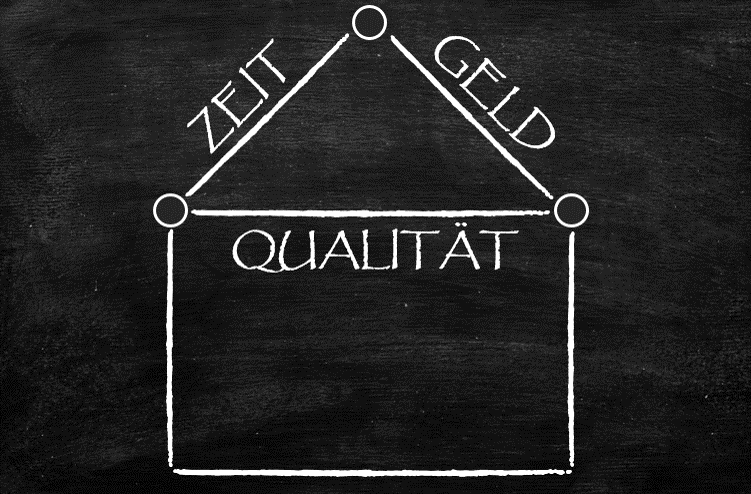Which expansion level suits me?
There are three basic types of expansion stages for prefabricated houses, which you will find in many manufacturers’ catalogues: “ready to use”, “ready for technology” and “ready for expansion”. However, the meaning of these designations is not clearly defined, each manufacturer can interpret them differently. Therefore, always ask exactly which specific services are included in the price for the selected expansion level. Neither “turnkey” nor “ready to expand” are legally protected terms. The common definition of different expansion stages for prefabricated houses is therefore only an orientation. The exact scope of the service is determined individually by the owner and contractor in negotiations. Which services are usually hidden behind the terms, we have for you in the article turnkey, ready for technology or ready for expansion – what does that mean? compiled.

We have identified four factors to help you choose which expansion stage is right for you as the builder and how it affects the construction costs:
- Construction costs per stage of expansion according to trades
- Work and time required for personal contributions
- the support and security in your construction project as well as
- the customization options of your home
Turnkey homes have historically been the most popular, accounting for 72% of all prefabricated homes built. 19% of all prefabricated house builders opted for a technically ready model , and only around 9% for the lowest expansion stage “ready to expand” .
The essentials in brief:
Complete package or scope for passionate do-it-yourselfers? The scope of services provided by construction companies is freely selectable and negotiable.
Exact knowledge of the scope of services means planning security and the avoidance of legal disputes.
The rule of thumb is: The more work you do yourself, the cheaper, but also more time-consuming and labor-intensive your construction project will be.
Construction costs per stage of expansion according to trades
The costs are highest for turnkey houses: Very simple versions are available from €100,000. As a rule, however, you should plan for two to three times as much.
The reason for the increased overall costs is that the ratio of material costs and labor costs shifts during interior work. The increase in costs associated with this is enormous. By what percentage your costs can increase in addition to the material costs, we have broken down the individual services for you here:

If you opt for a turnkey house , the interior work will cost you more than twice as much as if you had done the interior work yourself. However, the turnkey house also has a positive aspect on the cost side: the costs are usually higher, but can also be calculated with greater certainty in advance.
The technology-ready house is generally cheaper overall – but only with good planning. It is true that you save some of the often considerable labor costs involved in fitting out the interior, but something can always go wrong. Unless the individual work is well coordinated and done safely and competently, individual errors can ultimately make the tech-ready home more expensive than its turnkey equivalent.
The ready-to-build house is the cheapest, because you save completely the labor costs for the interior work here. Ready-to-build houses are available from around €75,000 (kit houses even from €50,000). However, what applies to the technology-ready houses is even more important for the ready-to-build houses: The total costs of the construction project can hardly be planned in advance and individual errors can cause unexpected heights.
Labor and time required for personal contributions
Carefully plan how much time you can invest yourself, bearing in mind that, unlike a professional, you will be less routine and slower in doing the work. In addition, you often have to acquire knowledge beforehand, which also takes time.
Getting the house turnkey from the manufacturer means a significantly lower time and workload. In addition, the overall duration of the construction project can be planned very well.
The amount of work and time required for the technically ready house is higher. But enthusiastic and talented do-it-yourselfers who have the time to spare often enjoy doing this extra work on their own house. However, you should be careful when planning your time: Since some areas are your own responsibility, the construction project can sometimes unexpectedly take a long time.
With the extension house , the work and time load is enormous. Because you carry out the entire interior design yourself, an enormous responsibility rests on your shoulders. Interior work covers a wide range of activities: from relatively light work such as wallpapering and tiling to demanding (and dangerous!) such as electrical and sanitary installations. Being a hobby do-it-yourselfer is therefore not enough here. Sound manual experience is a prerequisite. The necessary period of time for the construction project can be planned to an even lesser extent here than with the technically ready house.
Therefore, be sure to plan buffer times for your project in case something goes wrong. Because the higher financial burden if you have to pay rent for a longer period of time can quickly eat up the savings from doing your own work.
care and security
If you decide to buy a turnkey house , you usually have a single contact person for the entire construction project. This is an advantage because it clearly clarifies all responsibilities in the event of errors.
With the technically ready house you have a central contact person for the shell construction and part of the interior fittings, but due to the division of tasks in the interior fittings, responsibilities for errors are often not clearly identifiable. This leads to an increased potential for conflict with the contractor.
If you decide to have a converted house , then you do not have a central contact person for the interior design. However, the interior design of electronics and sanitary facilities is associated with considerable safety risks. No client wants to see water damage or even a fire on their construction site. It is therefore important to be particularly careful here and, if in doubt, only have such work carried out by specialists.
When doing your own work, be sure to consider liability and insurance risks, especially for your construction workers. As a self-builder, you are subject to the same obligations as a commercial entrepreneur.
Customization options
Due to the high demand, a relatively diverse range of turnkey houses has developed. Many of the ready-made packages can be individually tailored to your needs. However, this is often associated with large additional costs. Technically and ready-to-build houses can of course be individualized very well by doing your own work. Although this means more work, it also creates a considerable degree of identification with one’s own home.

The conclusion
The meaning of the expansion stage can be broken down into the following formula: The more work you do yourself, the cheaper your building project will be. But it is also more time-consuming, labor-intensive and risky.
But which expansion stage is the right one for you? That depends entirely on you and your wishes!
- If you are a layman, more security-oriented and also solvent, then a turnkey house is probably the best choice for you.
- Are you not a professional craftsman, but are you an enthusiastic do-it-yourselfer and are you looking for a healthy balance between (planning) security and individualisation? Then you might be best advised to go with a fully-equipped house.
- Are you a trained craftsman or do you at least have in-depth practical experience? Your need for individuality is more pronounced than for security? In addition, would you describe yourself as a bargain hunter? Then you should consider venturing into a conversion home.




